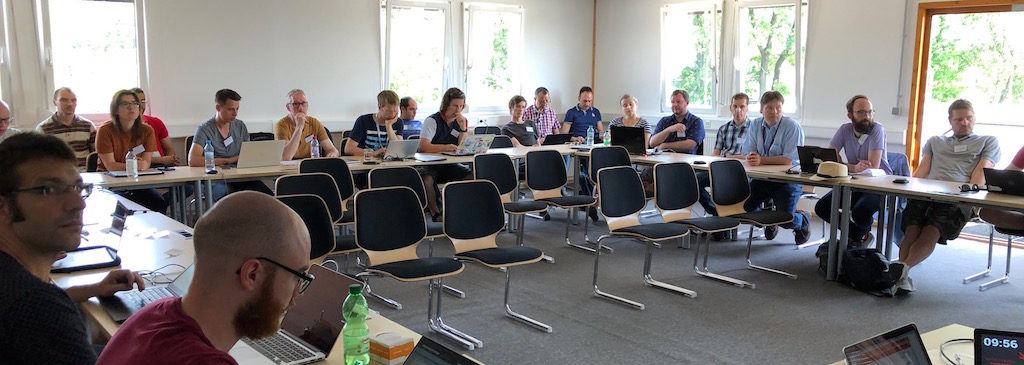Kick-off meeting of PaNOSC WP4 hosted at EuXFEL
The kick-off meeting of PaNOSC work package 4 – Data Analysis Services, took place from 25 to 27 June at EuXFEL in Schenefeld, Germany, with the goal of better coordinating the people involved in the WP and the future operational steps.

After an overview of PaNOSC by the project coordinator, Andz Götz, Prof. Hans Fangohr, WP4 leader, presented the plans foreseen in the WP. All partners contributed by informing each other about who is active in WP4 in their institutions, the work carried out after six months from the start of the project, the use of VISA and Jupyter technologies in their organizations, the services deployed and use cases.
During the 2nd day of the meeting, the possibilities of coordinating the work with the ExPaNDS project were discussed, and the Notebook technologies in use at EuXFEL were presented by the invited local scientists.
During the last day, presentations mainly focused on visualisation tools and hdf5, virtual hdf5 data sets, h5glance and h5py, and on the deployment of different possible computational environments. With reference to the latter, JupyterHub and BinderHub experience were presented to highlight different functionalities and opportunities for a better user experience. Throughout the meeting, brainstorming and planning was carried out in smaller groups focused on particular topics.
It was considered that the BinderHub model might be a good way forward to replace JupyterHub. Due to its features, Binderhub would allow deploying the same computational environment at all facilities, moving away from the facility specific provision of software, and giving good chances to a greater reproducibility.
The BinderHub approach may open other opportunities. A repository for each experiment data type may be defined, each of which would contain one or more notebooks with templates for typical analysis steps of specific types of data sets. An URL pointing to the repository could then be embedded with a data set in the PaNOSC meta data portal, and by navigating to that URL, an analysis environment would be created to allow analysing and inspecting a data set in a notebook. In this way, PaNOSC portal would allow a data set to be easily searched and found and the available data analysis tools would operate on the data set.


